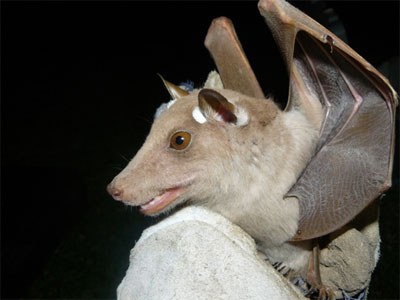Identification pointers
In appearance almost identical to the Wahlberg’s Epauletted fruit bat, the most convenient characteristics that distinguish it from the Wahlberg are the positions of palatal ridges in the mouth and a small frequency difference in their call. Forearm lengths vary from 75-88 mm and mass from 56 to 140 grams.
Roosting habits
They commonly share roosts with the Wahlberg’s Epauletted fruit bat, usually indigenous evergreen trees with good foliage cover10. Colonies may number in the hundreds, and they may take a while to settle after a night’s foraging. Members of the colony can be aggressive towards other members roosting too close to them.
Breeding
Single young are born per year but twins have been recorded, with a peak in births observed during August in Zimbabwe. Females carry the very young babies with them during flight but leave them hanging in the roost when they become too large to carry conveniently.
Food
The fruits of garden trees such as bananas and mangoes as well as the flowers and nectar of many indigenous trees, which they also pollinate. Soft and pulpy fruits are preferred and hard fruits such as pears and apples are left untouched. Fruit bats play an invaluable role in forest regeneration, not only by pollinating trees, but also by means of seed dispersal as they defecate whilst flying around.






